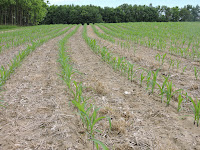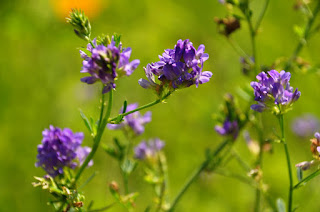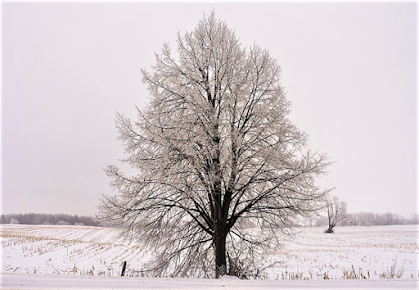Say Yes to No-Till Farming
What do you think is the most crucial component in any farming operation? Although equipment, seed, fertilizer, and other farming tools might come to mind, these can all be interchanged or replaced. The soil is the most crucial component. The one constant in any farming operation is the land being farmed. Most farmers strive to do their best to be good stewards of the land because their livelihood depends on the productivity of the soil. One practice that will improve soil productivity and health is no-till farming.
No-till
farming is a method of growing crops from year to year with minimal soil
disturbance. Crop residue is left on the field after harvest, where it acts as
a mulch to protect the soil during the winter. No-till farming helps to control
soil erosion, keeping the valuable topsoil on the crop field. The following year’s
crop is planted with a special planter that cuts a slot through the residue
just wide enough to place the seeds in the soil.
Conserving
soil is not the only benefit of no-till. Leaving crop residue on the field
helps increase water infiltration and limit runoff from the field. This helps
to reduce the amount of sediment, fertilizer, and pesticides that might be
transported to nearby surface water, therefore reducing pollution.
Additionally, more water remains available in the soil to be utilized by the
growing crop. No-till reduces soil compaction along with labor, fuel, and
machinery costs needed to produce a crop. Soil managed through no-till has
higher biological activity and more organic matter than soil that’s
conventionally tilled.
Despite all
the well-documented advantages of no-till, it has a slow adoption rate. Based
off a Natural Resources Conservation Service study published in 2021, no-till
has only been adopted across 21% of all cultivated cropland acres in the United
States. So why should you say yes to no-till?
Converting
to no-till could save you thousands of dollars annually. On average, farmers
that use conventional tillage use just over 6 gallons of diesel per acre, while
no-till requires less than 2 gallons per acre. Across the country, this
difference means nearly 282 million gallons of diesel fuel is saved annually by
farmers who practice no-till over conventional tillage. A producer who farms
500 acres and switches to no-till could save 2000 gallons of diesel fuel.
Assuming a diesel fuel cost of $4.00 per gallon, that producer could save more
than $8,000 in fuel cost each year. Besides reduced fuel costs, no-till will
also save you time. For example, a producer who tills 15 acres per hour could
save approximately 33 hours of work with each eliminated pass over a 500-acre
field by adopting no-till.
Fields
managed with no-till will have a higher water holding capacity, better soil
retention, and increased organic matter than conventionally tilled fields. Over
time these benefits can lead to lower fertilizer and herbicide inputs, which
provides additional savings, especially with the high costs of these materials
we are experiencing.
Adding a new
practice into your operation can be challenging, but we are here to help. We
understand that farmers need to care for their bottom line, while also caring
for their land. The Shiawassee Conservation District has financial incentives
to try no-till farming for agricultural producers in the Looking Glass River
Watershed. This program will be open until September 2024 and is a great
opportunity to test out a new practice. Remember, it can take three to five
years to see the benefits of no-till in your operation. You do not have to farm
in the Looking Glass Watershed to receive assistance to transition to no-till.
There are Farm Bill programs available that provide both technical and
financial assistance. Call the Shiawassee Conservation District for more
information on no-till and other conservation practices and programs.
This
information is part of a larger project funded by EGLE under the NPS Control
Fund and Section 319 of the federal CWA.




Comments
Post a Comment